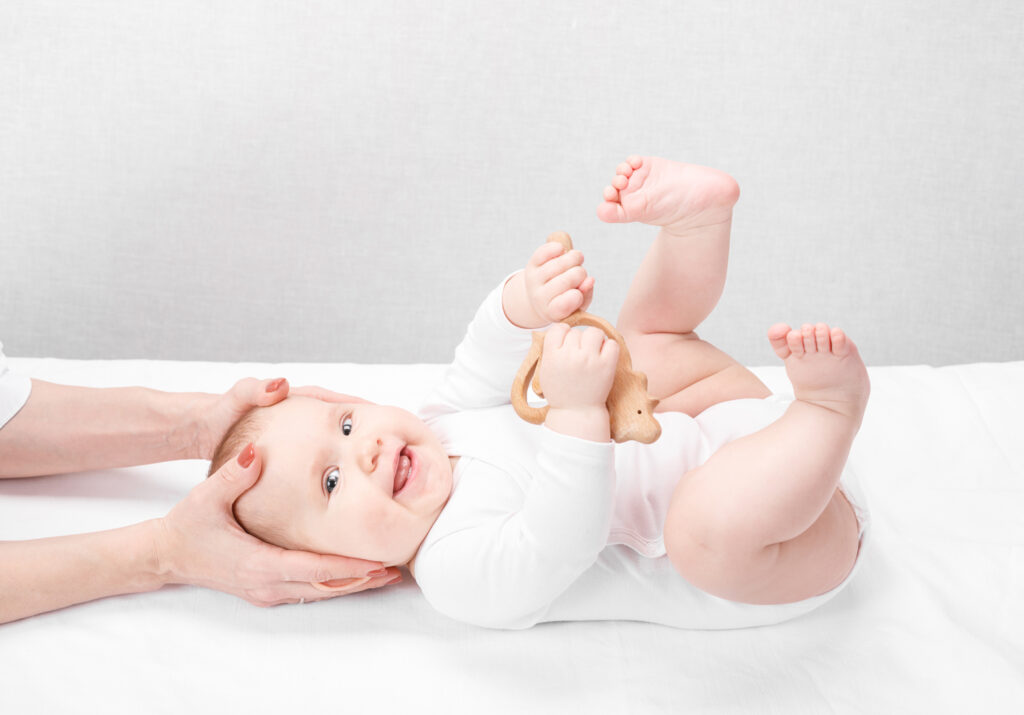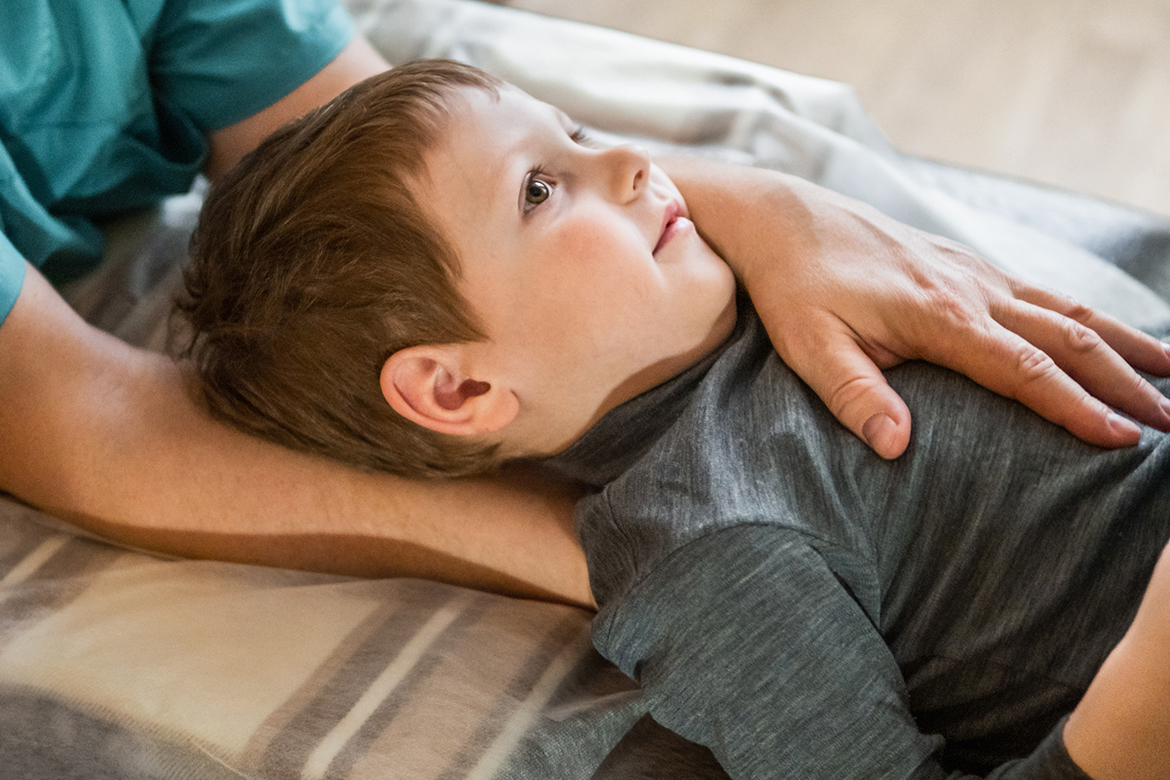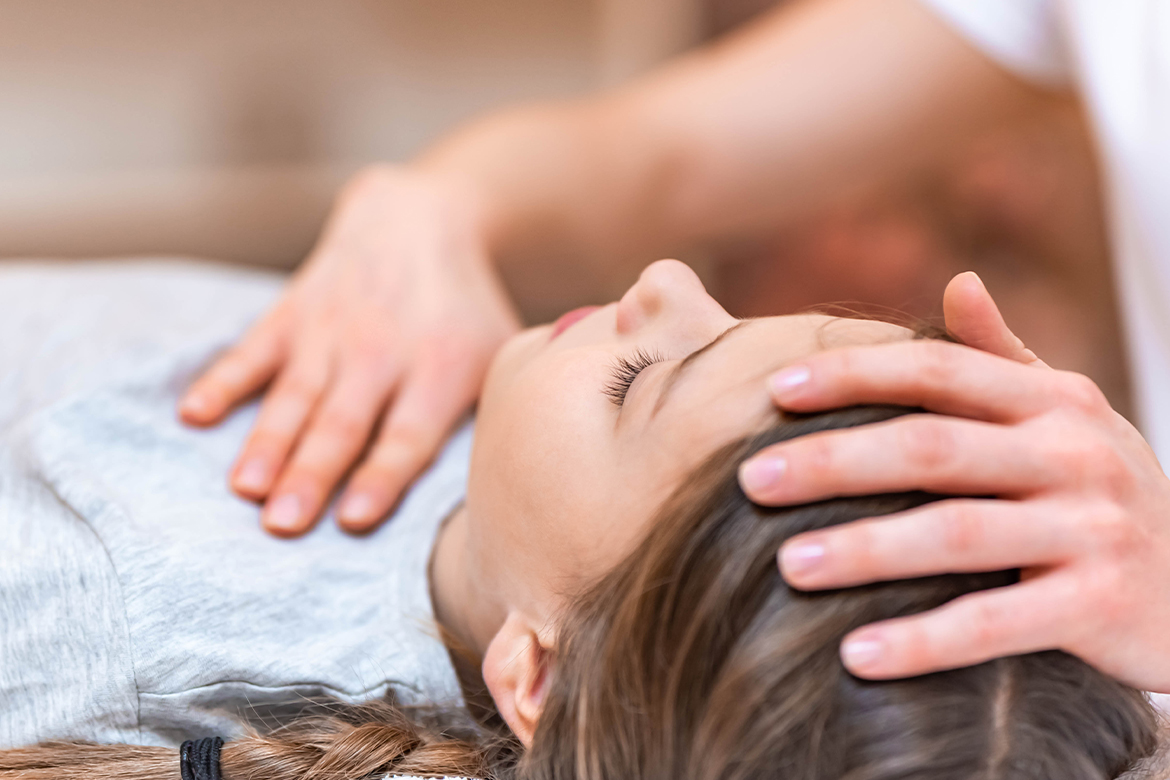Pediatric Cranial Osteopathy
It is a common belief that babies and children should have no structural stresses or strains in their bodies, because they are “so young”. The reality is very different.
Birth is one of the most stressful events of our lives. The baby is subjected to enormous forces, as the uterus pushes to expel the baby against the natural resistance of the birth canal. The baby has to turn and twist as it squeezes through the bony pelvis, on its short but highly stimulating and potentially stressful journey.

The baby’s head has the remarkable ability to absorb theses stresses in a normal delivery. In order to reduce the size of the head, the soft bones overlap, bend and wrap as the baby descends. The baby’s chin is normally well tucked down towards its chest to reduce the presenting diameter of the head.
Many babies are born with odd shaped heads as a result. In the first few days, the head can usually be seen to gradually lose the extreme moulded shape, as the baby suckles, cries and yawns. However, this unmoulding process is often incomplete, especially if the birth has been difficult. As a result, the baby may have to live with some very uncomfortable stresses within its head and body.
Some babies cope extremely well with even quite severe retained moulding and compression. For others it is a different story, and they can display a variety of problems including the following:
Some babies may regurgitate milk between feeds or may have bouts of prolonged crying due to colic or wind which is often worse in the evening. This may be caused by irritation of the nerve to the baby’s stomach as it exits from the base of the skull which impairs digestion. The baby’s diaphragm may also be stressed or distorted which can further compromises both digestion and the ability of the baby’s stomach to retains its contents.
A crying, fractious, irritable baby often needs to be rocked to sleep and prefers to be carried. This may be because the baby is uncomfortable, with a constant feeling of pressure in the head which is made worse by the extra pressure on the head when lying down.
Some babies can take a long time to feed causing one feed to merge into the next or the baby may be a “windy” feeder. Feeding is difficult and tiring for a baby due to mechanical stresses though the head, face and throat. The nerves to the tongue may be irritated as they exit from the skull making sucking difficult.
Some babies sleep for only short periods and may sleep little during the day (or night), waking to the slightest noise. This may be due to tension on the bony and membranous casing of the baby’s skull which keeps the baby’s nervous system in a persistent alert state.
As the child grows, the effects of retained moulding can lead to other problems such as the following:
Retained moulding compression can cause impaired growth and drainage of the sinuses and facial bones causing the child to have a constantly blocked or runny nose and to persistently breath through the mouth leading to an increased chance of dental overcrowding.
Retained moulding and birth stresses take their toll on the body’s reserves and also depletes the immune system. This leaves children more vulnerable to all types of infection. Recurrent ear infections can be caused by retained birth compression within and around the bones of the ear impeding fluid drainage from the ear leading to poor development of air sinuses in the ear and partial or complete blockage of the eustachian tube. Infections never fully clear leaving a vulnerability to the next infection and a depleted immune system.
Continuation of the restlessness as a young baby, retained moulding compression can make a child uncomfortable staying in one position for too long which can become habit forming resulting in poor concentration, constant fidgeting, difficulty sitting still, hyperactivity or a “butterfly” type child who flits from one thing to the next. Severe compression can modify normal patterns of learning to the brain.
Retained moulding compression can aggravate a tendency to asthma. General lowered immunity leads to more chest infections. After infections, the chest remains tense and the ribs do not return to full function, aggravating an asthmatic tendency. Cranial osteopathic treatment to release birth stresses and help to improve chest function is often beneficial in reducing the frequency and severity of asthma attacks.
Contact Us
Error: Contact form not found.


